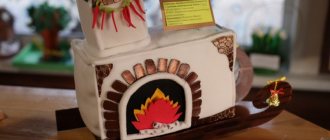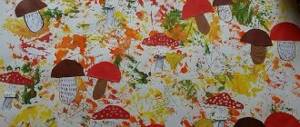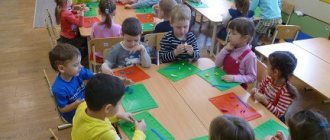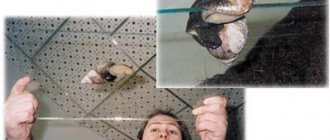Summary of the open lesson “Air is invisible”
MKOU Toguchinsky district "Bugotakskaya secondary school"
Educator: Kazantseva Anna Yurievna
Summary of an open lesson in a mixed-age group “Air is invisible”
Integration of educational areas:
“Cognitive development”, “Speech development”, “Socio-communicative development”, “Physical development”.
Target:
Systematize children's knowledge about the properties of air, develop speech and cognitive activity, in the process of experimentation.
Tasks:
.
Help enrich and consolidate children's knowledge about the properties of air.
.
Expand children's understanding of the importance of air in human life.
.
Develop the ability to establish cause-and-effect relationships based on basic experimentation and draw conclusions.
.
Cultivate interest in research activities.
.
Introduce children to an unconventional
air painting technique - blotography
.
.
Activate speech activity.
.
Strengthen and expand children's vocabulary.
.
Develop the ability to independently solve a given problem.
.
Foster friendly relationships between children.
Materials and equipment:
plastic bags, toothpicks, paper fans, cups of water, cocktail straws, identification cards, containers with crushed foods (orange, garlic, onions), napkins, blindfolds according to the number of children, aprons according to the number of children, balloons, caps from felt-tip pens, audio recording, red and green signal cards, brushes, gouache pre-diluted with water, a sheet of paper.
Progress of educational activities:
Educator
: Guys, guests came to our lesson today. Let's say hello. (Greetings to the children).
(Children hold hands and stand in a circle.)
Let's join hands, friends!
Let's smile at each other.
We wish everyone well,
And let's say hello together!
Educator:
children, do you want me to tell you an amazing story? You already know that there are oceans on planet Earth. But there is another invisible ocean. We can dive into it, swim, and stay dry. What kind of ocean is this, don’t you know? Then guess the riddle: It goes through the nose into the chest and goes back on its way. It is invisible, but still we cannot live without it (Air)
Educator:
Well done boys. Do you think there is air in the kindergarten premises? (Children's answers).
Educator:
Today we will talk about air like real scientists - researchers. Scientists work in a room with many experimental instruments, but what is this room called? (Children's answers). That's right guys, laboratory. Today I organized a small laboratory for you in the group. Let's go to our laboratory to conduct experiments. We must be in special clothing, wear aprons. In the laboratory, certain rules must be followed:
. Maintain silence and do not interrupt each other.
. Do not taste the contents of the vessels.
. Do not touch anything on the tables without the permission of the supervisor.
. We listen very carefully.
. Work carefully.
Educator: guys, how can you catch air? (Children's answers).
EXPERIENCE No. 1.
“How to catch air?”
Educator
: Take plastic bags from the table and try to catch the air. “One, two, three, catch the air,” and we’ll twist the bags. What happened to the packages? (swollen). What's in them? (air).What is it like? (transparent). Do you see him? (No). Can you feel it? (No).
Educator:
Fine! Let's check. Take a sharp stick and carefully pierce the bag. Bring it to your face and press it with your hands. What do you feel? (a stream of air).
Educator
: How else can you feel the air? (children's answers).
Guys, there is a fan on the table, take it in your hands and wave it towards yourself. What do you feel? (breeze).
CONCLUSION
: You can feel the air.
Educator
: Do you know how you can see air? (children's answers).
EXPERIENCE No. 2.
"We see air"
Educator
: you need to take a straw, put one end in water, and blow on the other. (children inhale air and exhale into a tube). What do you see? (air bubbles). Blow into the tube strongly, and then weakly. What changed? (children's answers). In both cases were there the same number of bubbles? (No). Why? (children's answers).
CONCLUSION
: air mono see. When we exhale a lot and forcefully, there are a lot of bubbles. When we exhale less and weakly, there are few bubbles. Using a straw and a container of water, we saw air.
Educator:
Guys, can you hear the air? How can you hear? (children's answers). If we blow into the cap of a felt-tip pen, we will hear a sound. Take the lid and blow from the edge. What do you hear? (sound of air).
Now let's inflate the balloon. What do you think can be done with a balloon to hear the air? (children's answers), (we hear the squeak of air).
CONCLUSION
: air can be heard.
Physical education lesson: Invisible air, (hands up right and left) Go out for a walk! (“name”) Invisible air, (hands up right and left) How to catch you? (Clapping hands in different places) If I run quickly into the field, (they run in place) I’ll find clean, pure air! (Rub their hands) If I walk through the forest with my grandfather, (steps in place) I will find the most healthy air! (Hands crossed to shoulders) If I go to the mountains with my dad, (stretch up on tiptoes) I will find the most crystalline air! (“flashlights”)
Educator:
can you smell the air? (children's answers).
EXPERIENCE No. 3.
"Know by smell"
Educator: the air itself has no smell, but it can carry odors. By the smell, we can guess what our mother prepared for us in the kitchen. I invite each of you to feel the aromas (orange, onion, garlic) with your eyes closed. (Children take turns sniffing the container with the smell). You did great. Well done.
CONCLUSION:
clean air does not smell of anything, it smells only of the one whose smell is currently spreading.
Educator:
guys, do you think air has weight? (children's answers). We'll check this now. Are two balloons hanging on a wooden stick at the same level, that is, do they have the same weight? (children's answers), (Yes). The teacher pierced one balloon with a toothpick and it burst, that is, the air came out, it became lighter (higher than a balloon filled with air).
CONCLUSION:
air has weight.
Educator:
Guys, you can draw with air. This technique is called blotography. Want to try? (Yes).
Educator
: dip the brush in diluted paint and spray it onto a sheet of paper. The thicker the paint, the richer the color, but the more difficult it is to blow out. We take a tube and blow through it onto multi-colored drops of paint, they turn into blots. At the same time, the sheet of paper can be rotated - the blots turn out even more interesting! (children try to draw). Analysis of children's work.
Reflection
Educator:
Let's once again consolidate what we learned about air. I will say statements, and instead of answering you will show colored cards. A red card means no, and a green card means yes. Be careful!
-The air surrounds us on all sides. (Yes).
-The air is transparent, so we don’t see it (Yes).
-Air is heavier than water (no).
— A person can live without air (no).
-Wind is the movement of air (yes).
-Clean air has a smell (no).
Educator:
Well done guys did a great job. Guys, we did a lot of experiments today. Tell me, what experience did you like best? (children's answers). What new did you learn today? (children's answers), (blotography).
Educator:
our lesson has come to an end, you were all attentive and active. Children are given balloons as a gift.





